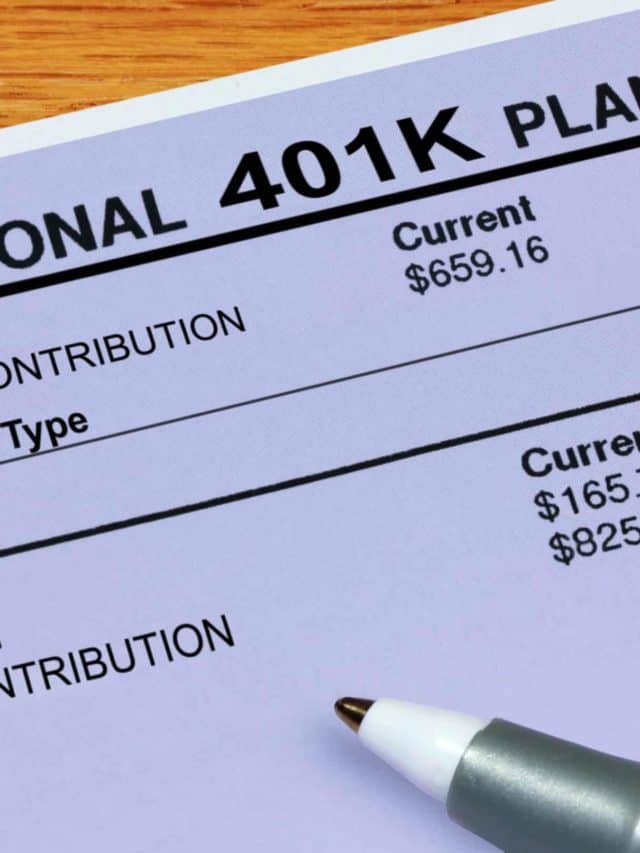To make Wealthtender free for readers, we earn money from advertisers, including financial professionals and firms that pay to be featured. This creates a conflict of interest when we favor their promotion over others. Read our editorial policy and terms of service to learn more. Wealthtender is not a client of these financial services providers.
➡️ Find a Local Advisor | 🎯 Find a Specialist Advisor

A while back, one of my daughters made my day by asking me a question.
A question may seem like an odd thing to make one’s day, but this one did… She asked me how to make the most of her employer’s 401(k) match.
This made my day for several reasons.
- She trusts enough to ask financial questions (no small thing for a parent!).
- She’s saving for retirement even though she’s still in her 20s.
- She’s savvy enough to make sure she’s getting the most “free money” possible from her employer.
Employer Matching of 401(k) Contributions
Unfortunately, not all employers match their employees’ contributions to retirement plans like the 401(k). Even those who do match, don’t necessarily match equally.
- Some match $0.50 on the dollar up to 6% of compensation.
- Some match dollar-for-dollar up to 3%.
- Some match dollar-for-dollar up to 10%.
- Some even contribute a set percentage regardless of the employee’s contribution (e.g., the University of Maryland contributed 7.25% to my 403(b) while I worked there, even if I contributed nothing).
IRS Limits on 401(k) Contributions
The IRS doesn’t allow unlimited contributions to your 401(k).
As of this writing, the limit on employee contributions for 2021 is $19,500 a year, with another $6500 a year “catch-up” allowed if you’re 50 or over.
Employer contributions are limited through the overall contribution limit of $57,000, or $63,500 including the catch-up for those 50 or older.
How the IRS Limit Could Cost You a Lot of Your Employer Match
Since the limitation is on your full-year contribution, you could in principle max out your contribution early in the year. If your employer is one of those who match contributions, but only on a per paycheck basis, you could miss out on a portion of the match.
Here’s how it could work.
Say your salary is $120,000 paid semi-monthly – a nice round $5,000 per paycheck; and you’re younger than 50, so your employee contribution is capped at $19,500 a year, or 16.25% of your salary.
Say also that your employer gives you a $20,000 bonus in your first January paycheck, for the previous year.
You decide to contribute to your 401(k) the full year’s $19,500 in January, so it has the most time in the market to grow. It’s all coming from your bonus, so it doesn’t affect your day-to-day finances. That’s because your budget is built on your $10,000 monthly income without counting on bonuses to cover rent and groceries.
If your employer match is dollar-for-dollar up to 3% of your regular paycheck, you’d get the maximum $150 match for the January pay period in which you contributed the full $19,500 (3% of $5000).
Since you’ve hit your annual limit in your first January pay period, you don’t contribute anything for the rest of the year. That means that you only get a $150 employer match for the full year!
How to Optimize Your Employer 401(k) Match (if Any)
Some employers make sure to avoid this problem by not placing any limit on a specific pay period’s match or by completing their year’s match at the end of the year to address exactly this sort of problem.
Make sure you understand how your employer’s match works. If they aren’t one of those who sidestep the problem, you need to be strategic in how you set up your contributions. Do this by dividing your contributions equally between pay periods across the entire year.
In the above scenario, that would mean dividing the $19,500 by 24, leading to a per-pay-period contribution of $812.50. Use an online calculator to figure out the best strategy for your individual case.
You Might Also Enjoy:
Other Steps for Maximizing Your 401(k) Balance
As described by US News and World Report, here’s a cheat-sheet for maximizing your 401(k) balance.
- Get a job where the employer offers a good 401(k) match.
- Set up automatic contributions into your 401(k) (using the above to make sure you’re not leaving any money on the table).
- If your employer doesn’t let you start contributing to your 401(k) from Day 1, find out when you can start and post a reminder on your calendar so you don’t forget it.
- Many employers have a default contribution, which may be much lower than it needs to be to hit the IRS limit (assuming you earn enough and are frugal enough to be able to afford it).
- Pay attention to your employer’s 401(k) vesting schedule – if you decide to move to a different company, you may want to time it after your employer contributions vest, so you can take them with you.
- Keep track of year-to-year changes in IRS contribution limits and adjust your contributions upward as possible.
- If your employer offers it, consider making your 401(k) a Roth version; while you won’t get a tax break when you make the contributions, the fact that you can make the same contributions and never be taxed on any withdrawals makes this potentially a very valuable way to fund your retirement.
- If offered in your employer’s plan, choose funds with lower fees (usually those will be index funds, which are often a good choice if you’re not an investing pro).
- Avoid penalties by not contributing more than the IRS limit and remembering to take the required minimum distributions when you’re old enough for those to be in effect.
The Bottom Line
While you can’t change how your employer matches your 401(k) contributions, you can strategize how you contribute to make sure you don’t leave any free money on the table.
Disclaimer: This article is intended for informational purposes only, and should not be considered financial advice. You should consult a financial professional before making any major financial decisions.

About the Author
Opher Ganel, Ph.D.
My career has had many unpredictable twists and turns. A MSc in theoretical physics, PhD in experimental high-energy physics, postdoc in particle detector R&D, research position in experimental cosmic-ray physics (including a couple of visits to Antarctica), a brief stint at a small engineering services company supporting NASA, followed by starting my own small consulting practice supporting NASA projects and programs. Along the way, I started other micro businesses and helped my wife start and grow her own Marriage and Family Therapy practice. Now, I use all these experiences to also offer financial strategy services to help independent professionals achieve their personal and business finance goals. Connect with me on my own site: OpherGanel.com and/or follow my Medium publication: medium.com/financial-strategy/.
Learn More About Opher
To make Wealthtender free for readers, we earn money from advertisers, including financial professionals and firms that pay to be featured. This creates a conflict of interest when we favor their promotion over others. Read our editorial policy and terms of service to learn more. Wealthtender is not a client of these financial services providers.
➡️ Find a Local Advisor | 🎯 Find a Specialist Advisor



